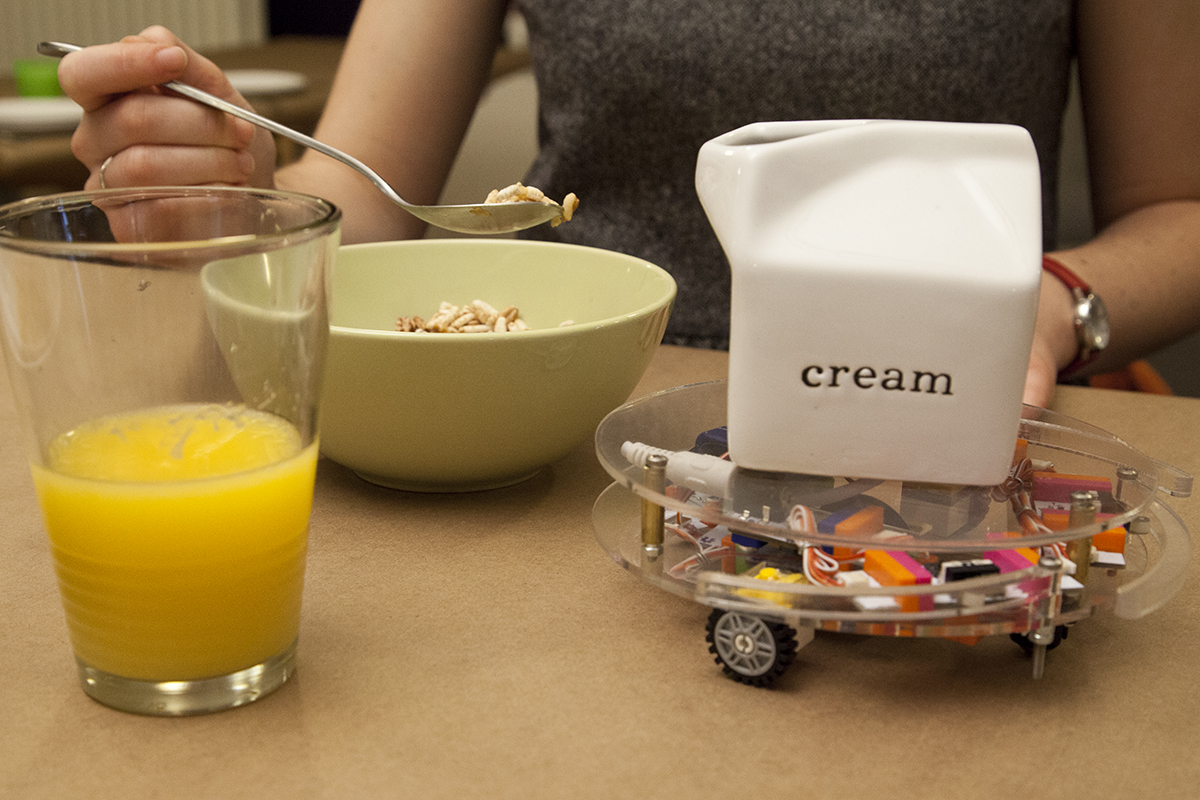At mealtime, be sure to set out your littleBits Robot Butler. The Robot Butler roams your table and passes out food to your guests so that you can sit back and relax while it does all the work. The Robot Butler moves on a central wheel that is connected to a dc motor and has little plastic arms that activate three roller switches along the perimeter as they bump into cups and bowls, causing the robot to turn and try elsewhere. This happens because there is an inverter in between the first dc motor and a second dc motor positioned on the edge.
The littleBits Deluxe Kit contains a number of the modules that you will need to make a Robot Butler. However, you will need to supplement this Kit with 3 roller switches, 1 extra DC motor, and 1 extra wire module in order to complete the project.
littleBits makes an opensource library of electronic modules that snap together with tiny magnets for prototyping, learning, and fun. Each bit has a specific function (light, sound, sensors, buttons, thresholds, pulse, motors, etc.), and the modules snap to make larger circuits. littleBits are sold in kits, which are available in the Maker Shed.



















